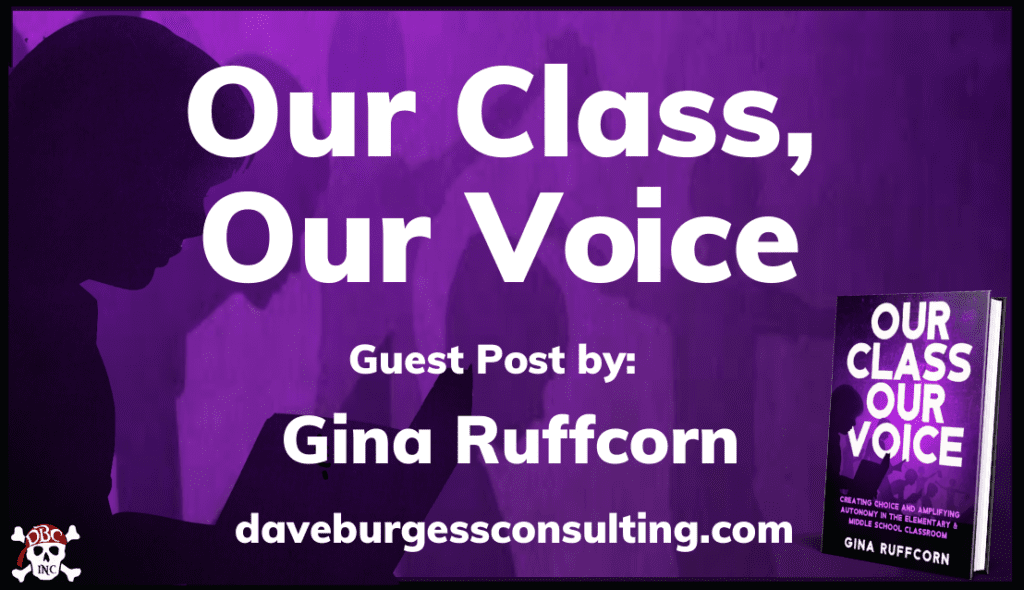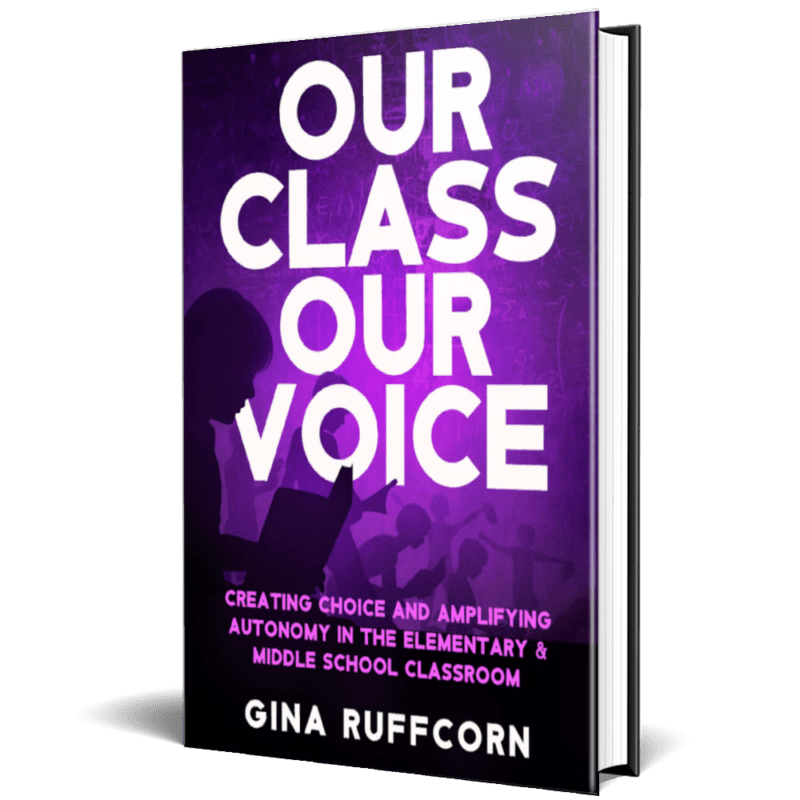Gina is also the author of Our Class, Our Voice--an outstanding book in our Ditch That Textbook like with Matt Miller. Learn all about Our Class, Our Voice, by clicking HERE.
But for now...
Take it away, Gina!
Guest Post by Gina Ruffcorn
Making decisions in daily life is a fundamental human need. As adults, the ability to make our own decisions motivates us to create, shape, and meaningfully contribute to our own choices. It connects us. It gives us purpose.
Students crave those same feelings.
Looking back, I don’t remember any of my pre-service coursework ever mentioning student choice or autonomy. The prevailing focus was on the teacher, the classroom management, and the presentation of the content material. No one ever addressed the students’ thoughts. Their opinions. Their choices. Their need for autonomy.
I had some epic power struggles with students in my first years of teaching, many of which could have been completely avoided. What if the classroom’s culture could have been improved by talking to the kids and getting their input? Think about that. What if the kids felt like they were a part of the decision-making process in their day?
What if your chair-tipping student could benefit from alternative seating? No more reminders or escalated voices insistently nagging about all four legs needing to be on the floor. Seating choices completely change the entire situation.
How about that time after recess when no one can get settled back down? Would the kids respond more calmly to the lights being dimmed while they worked, or if they listened to a read-aloud? Students are capable of making decisions and choosing the setting that works best for them.
Simply surviving in a classroom from day to day should not be a goal for you or for the students. Ask yourself how you could alter your daily classroom reality by giving the students choices and making small adjustments based on simple decisions. How would the classroom environment thrive if the students could make choices and decisions that benefitted them?
Honor your students’ voices and build the classroom with them. It has unimaginable benefits. Asking their opinions, giving them a say in daily operations, or allowing them to vote on an activity makes students feel important and valued. Take your students into account when you’re making plans for the classroom—from creating your physical space to operating it on a daily basis.
Creating choices and opportunities for student autonomy are the foundations for “Our Class, Our Voice.” The three areas of concentration are: Providing Choices, Creating a Classroom, and Establishing Relationships.
In the book, I share ideas directly from my own classroom. I encourage you to make the modifications to fit your class. I invite you to examine each idea and truly seek out how you might use it or adapt it to give your students more autonomy and voice. That’s the goal here—the students and their needs to feel seen, heard, and known.
How do we determine the best methods for us—even if they’re common, traditional approaches—to get the results we seek?
Ask yourself what you’re open to trying. What are you really, truly open to trying?
-Gina
Thank You, Gina!
What a thought-provoking post! Love it!
Be sure to follow Gina on Twitter at @gruffcorn13 and check out her incredible book, Our Class Our Voice by clicking the link below.
Our Class, Our Voice
Students are our future. Our world will be in their hands very soon. What can we do today to prepare them for that responsibility?
More info →





